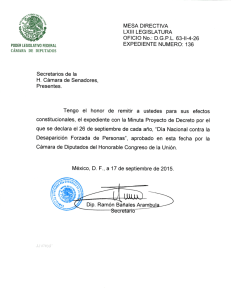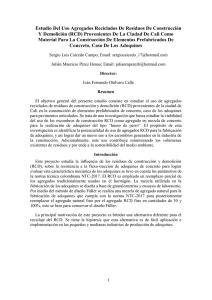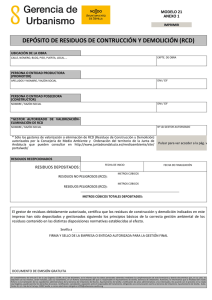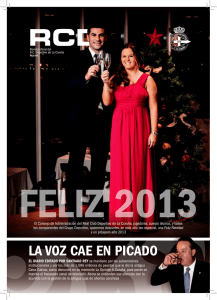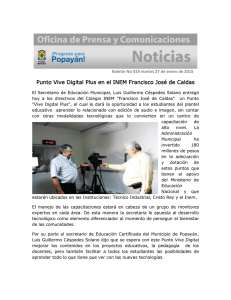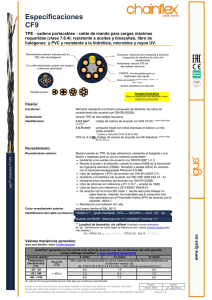RESUMEN El objetivo general del presente estudio consiste en
Anuncio
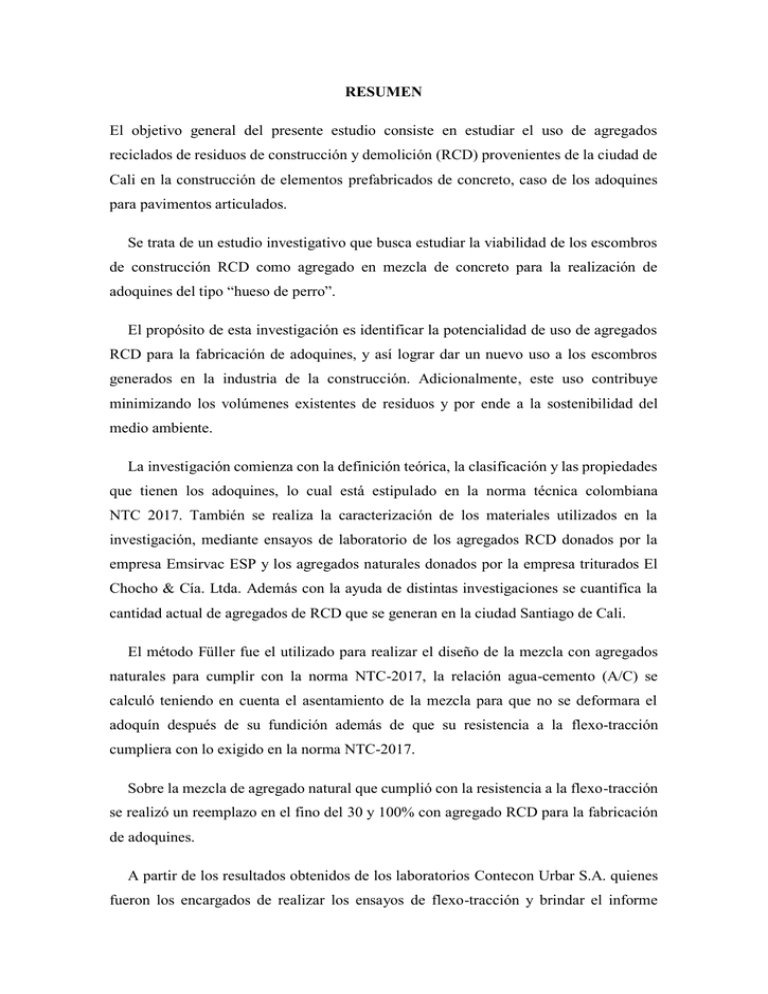
RESUMEN El objetivo general del presente estudio consiste en estudiar el uso de agregados reciclados de residuos de construcción y demolición (RCD) provenientes de la ciudad de Cali en la construcción de elementos prefabricados de concreto, caso de los adoquines para pavimentos articulados. Se trata de un estudio investigativo que busca estudiar la viabilidad de los escombros de construcción RCD como agregado en mezcla de concreto para la realización de adoquines del tipo “hueso de perro”. El propósito de esta investigación es identificar la potencialidad de uso de agregados RCD para la fabricación de adoquines, y así lograr dar un nuevo uso a los escombros generados en la industria de la construcción. Adicionalmente, este uso contribuye minimizando los volúmenes existentes de residuos y por ende a la sostenibilidad del medio ambiente. La investigación comienza con la definición teórica, la clasificación y las propiedades que tienen los adoquines, lo cual está estipulado en la norma técnica colombiana NTC 2017. También se realiza la caracterización de los materiales utilizados en la investigación, mediante ensayos de laboratorio de los agregados RCD donados por la empresa Emsirvac ESP y los agregados naturales donados por la empresa triturados El Chocho & Cía. Ltda. Además con la ayuda de distintas investigaciones se cuantifica la cantidad actual de agregados de RCD que se generan en la ciudad Santiago de Cali. El método Füller fue el utilizado para realizar el diseño de la mezcla con agregados naturales para cumplir con la norma NTC-2017, la relación agua-cemento (A/C) se calculó teniendo en cuenta el asentamiento de la mezcla para que no se deformara el adoquín después de su fundición además de que su resistencia a la flexo-tracción cumpliera con lo exigido en la norma NTC-2017. Sobre la mezcla de agregado natural que cumplió con la resistencia a la flexo-tracción se realizó un reemplazo en el fino del 30 y 100% con agregado RCD para la fabricación de adoquines. A partir de los resultados obtenidos de los laboratorios Contecon Urbar S.A. quienes fueron los encargados de realizar los ensayos de flexo-tracción y brindar el informe respectivo, se concluye que el reemplazo parcial y total del agregado RCD influye de manera negativa disminuyendo la resistencia a la flexo-tracción pero teniendo en cuenta los resultados estos adoquines con reemplazo pueden utilizarse en sitios donde la demanda de carga no sea tan exigente. Palabras clave: adoquines, agregado RCD, agregado natural, flexo-tracción y método Füller. ABSTRACT The overall objective of this study is to investigate the use of recycled aggregates from construction and demolition waste (CDW) from the city of Santiago de Cali in the construction of precast concrete paving block case articulated pavement. This is a research study that seeks to explore the feasibility of using construction debris CDW as aggregate in the concrete mixture in the making of paving block´s type "dog bone". The purpose of this research is to identify the potential use of CDW aggregates for manufacturing pavers, and achieve a new use for the debris generated in the construction industry. In addition it could help to minimize waste volumes and hence the sustainability of the environment. The investigation begins with the theoretical definition, classification and properties the paving blocks have, which is stipulated in the Colombian technical standard NTC2017. Characterization of materials used in the investigation is also performed by laboratory tests of aggregates CDW donated by the company EMSIRVAC ESP and natural aggregates donated by the company Triturados El Chocho & Cia Ltda. Also with the help of various investigations it was possible to determine the current amount of CDW aggregates generated in the city Santiago de Cali. The Füller method was used to design the mixture with natural aggregate to meet the NTC 2017 standard, the water-cement ratio (W/C) were calculated taking into account the settling of the mixture for the paving block not to deform after casting it and its flexion and traction resistance to comply with the requirements in NTC 2017 standard. On the blend of natural aggregate that met flexion and traction resistance, a replacement of the coarse aggregate and the fine aggregate was performed with 30 and 100% of CDW for manufacturing the paving block. From the results of laboratory Contecon Urbar SA who were responsible for conducting the flexion and traction tests and providing a relevant report, it is concluded that the partial and total replacement of added CDW negatively influences the flexion and traction resistance but considering that such results on these paving block´s CDW replacement could be used in places where the load is not quite demanding. Keywords: paving block, aggregate CDW, natural aggregate, flexion traction and Füller method
